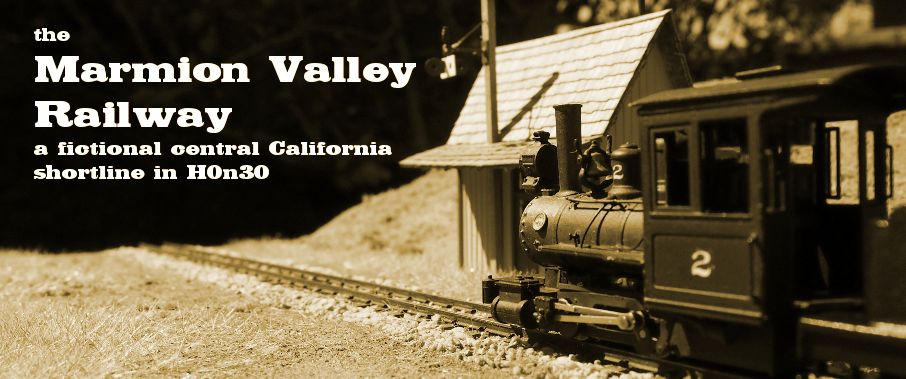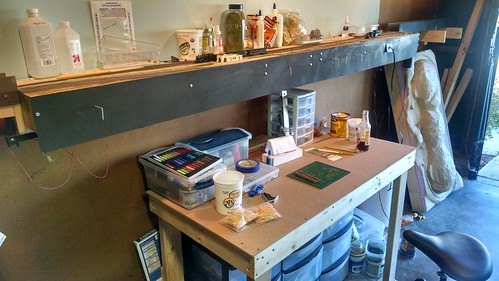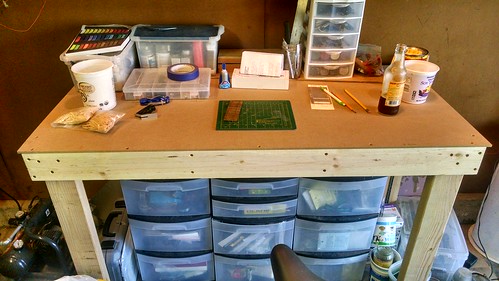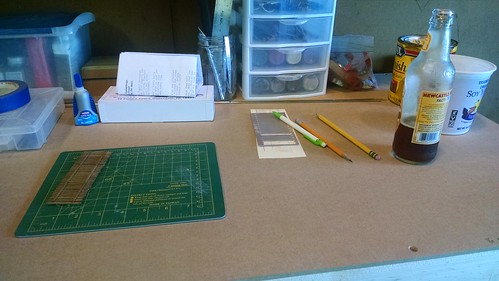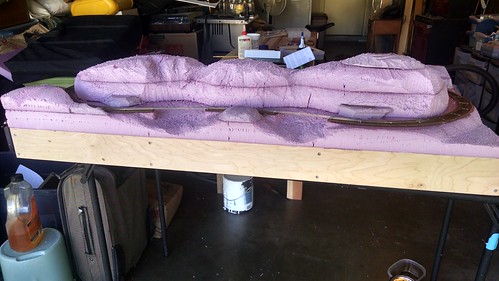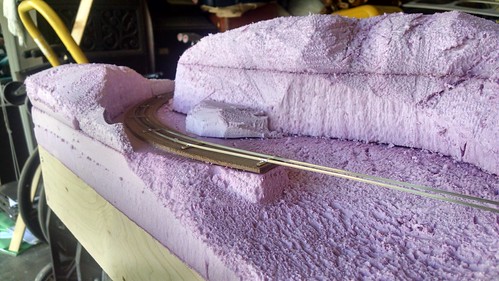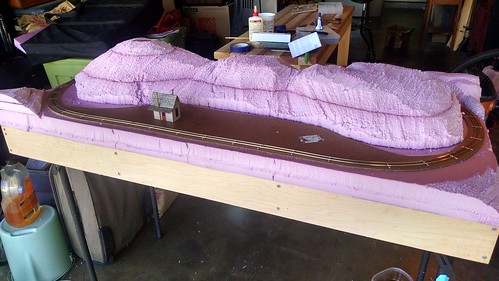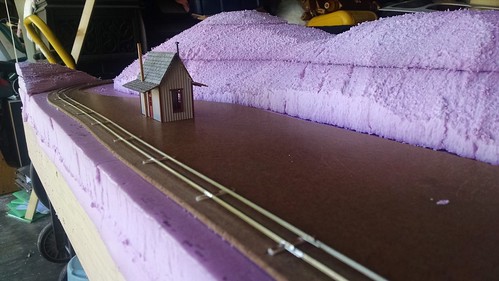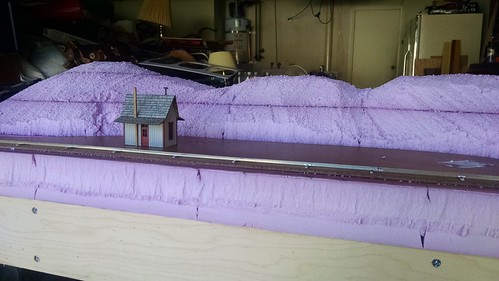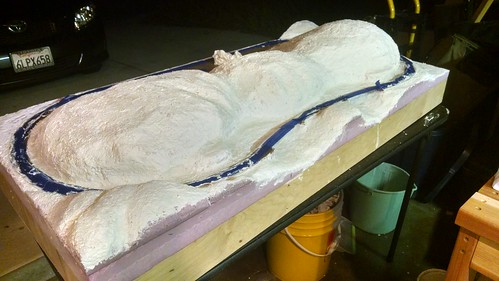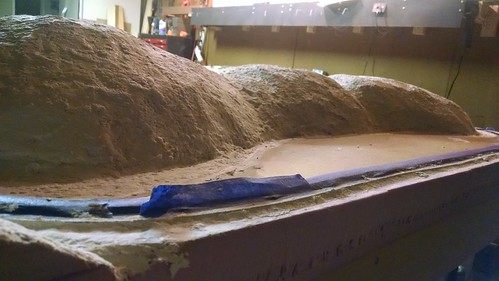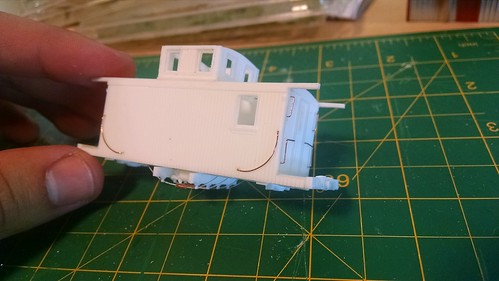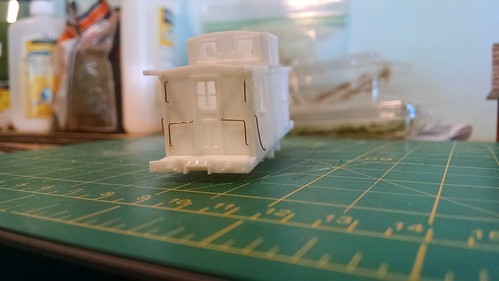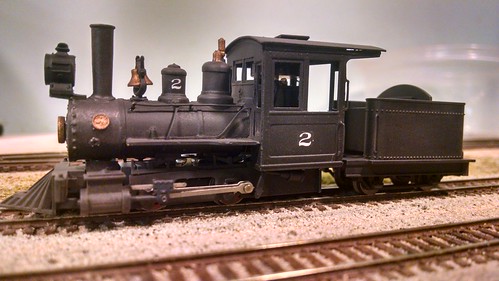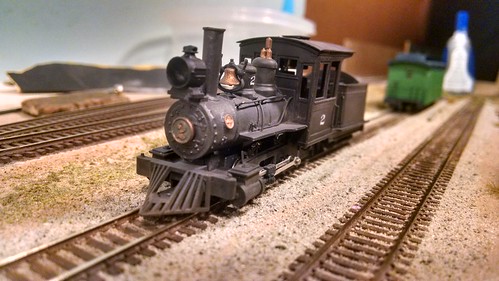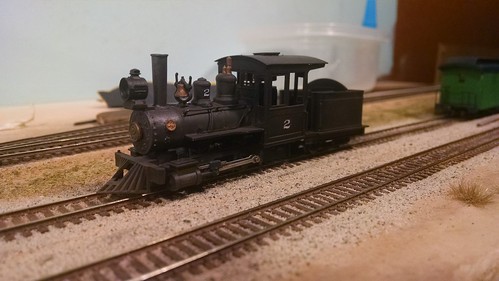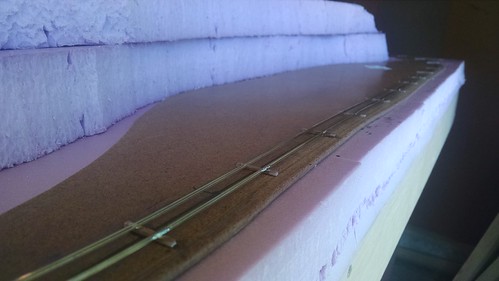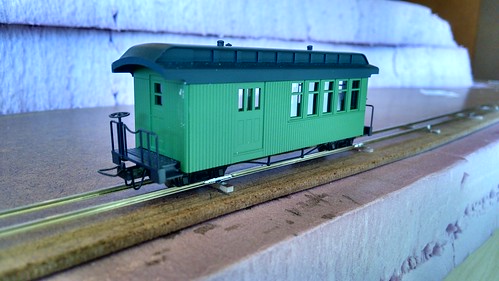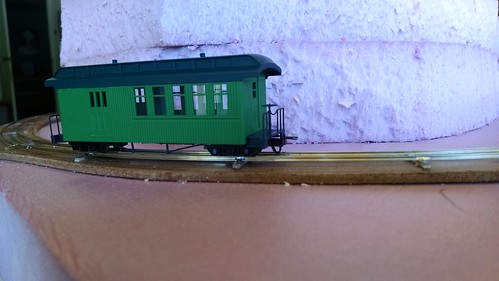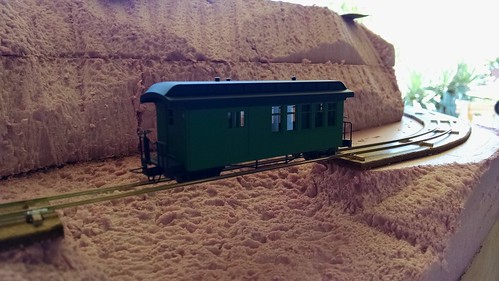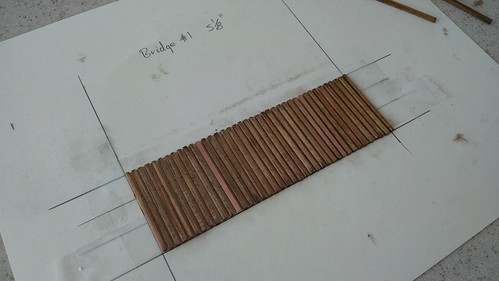I already had some stacking storage drawers under my N-scale shelf layout, and after some creative thinking I figured that I could fit a workbench under the layout, between the storage drawers and the shelf. A quick trip to the big-box store yeilded a few 1x4's and 2x4's, as well as a 2'x4' 1/4" MDF panel to serve as a smooth, solid bench-top.
I built a box-frame with the 1x4's, and used the 2x4's as legs. 1x4 sway bracing was added to the back of the table; the whole unit is sturdy enough that it didn't need side-braces. Here's how it all fits together; you can see the Marmion Valley layout nestled in its little storage nook next to the workbench:
The layout lights are above my head when sitting at the workbench, so they provide a lot of workable light. I might add another desktop light as well. I'm also going to hang a power-strip on the side of the workbench so that I can plug in my Dremel, soldering iron, bench grinder, and other sundry tools.
I dry-screwed the MDF top on, so that it can be replaced periodically once it gets too pock-marked, paint-stained, and solder-burnt.
Looking forward to sharing the new projects this workbench will harbor!
